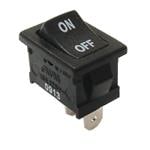Q&A: Sivers Semiconductors talks about opportunities
Vickram Vathulya, President and CEO of Sivers Semiconductors spoke to Electronic Specifier following news of the contracts it had signed through the US CHIPS and Science Act as Vathulya went into depth about their technology, expertise, and the future opportunities he saw for the company.
Sivers Semiconductors’ core business can be understood in two parts: the photonics side of the business, where they produce lasers, and the wireless side of the business, where they produce millimetre wave (mmWave) and beamforming solutions.
The US CHIPS and Science Act was brought into law in 2022, where the US government allocated almost $53 billion in funding with the aim of bolstering US semiconductor supply chains and supporting homegrown manufacturing. Due to these investments, the hope is that the US will manufacture almost 30% of leading chips by 2032 (this figure was provided by the U.S. Department of Commerce in August 2024, by the then-Biden administration).
“A good chunk of money is going into what the US government calls ‘lab to fab’ projects, which takes promising technologies and gets them ready for commercialisation,” said Vathulya.
As part of the contracts Sivers has signed, it will commercialise RF and beamforming technology for defence and dual-use communications. They will be working with companies such as Ericsson, Raytheon, and BAE Systems, a key opportunity for Sivers.
In being chosen for these contracts, Vathulya said it was “unheard of”, due to the size of the company. “On one hand, it’s a source of pride to win these projects. But I always tell my team that pride decoupled from commercialisation has limited value. We want to be working with the types of partners on technologies that the US government wants to see put out in the field,” he stressed.
Sivers’ specialisation in mmWave technology is especially interesting because of the perceived benefits it has in electronic warfare and SATCOM. mmWave technology operates between 10 and 50GHz, a higher frequency that enables more bandwidth and smaller components.
“A lot of foreign nation threats are coming to higher frequencies to avoid detection, so in the NATO countries and the US, they’re wanting higher frequency solutions,” explained Vathulya.
However, the increased frequency can result in waves that don’t travel as easily as lower frequencies. Beamforming technology, which Sivers utilises, allows them to direct these waves three to five times more efficiently than other solutions.
Acceleration of AI
Another major opportunity at the moment for Sivers was the utilisation of their photonics business, thanks to the acceleration in AI.
“NVIDIA and AMD and others, they’re putting stronger and stronger compute chipsets because the Googles of the world, the Microsofts of the world, want more and more powerful AI data centres,” he explained. “Within a data centre there are multiple racks of compute and storage units, and they’re trying to increase the size of these computer clusters so each rack can do more processing that’s needed.
“What’s happening now is the rack is getting denser and denser, but these compute units are only on for 25% of the time, the rest of the time they’re waiting for electrons. There’s a huge realisation that there’s a bottleneck in making these rack clusters bigger.”
As a result, the industry is turning to optical technologies to resolve these bottlenecks so that the rack units are communicating using light, not electrons.
“A lot of photonic companies have come up that are putting together photonics fabrics that wrap around these chips and convert the electronic signal into a photonic signal,” Vathulya added. “That’s great, but they still need high-precision lasers that can give a light source they can use to modulate.”
He believed that the answer lay in their precision laser arrays, including eight element, 16 element and 32 element arrays, which provide precision even at higher power levels.
“That’s a tremendous opportunity for us,” Vathulya summarised. “We already announced a relationship with Ayar Labs, a unicorn, and there are others we are engaging with.”
With these opportunities available, and Vathulya’s prescience about balancing pride with the commercialisation of products, the future looks bright for Sivers Semiconductors.







